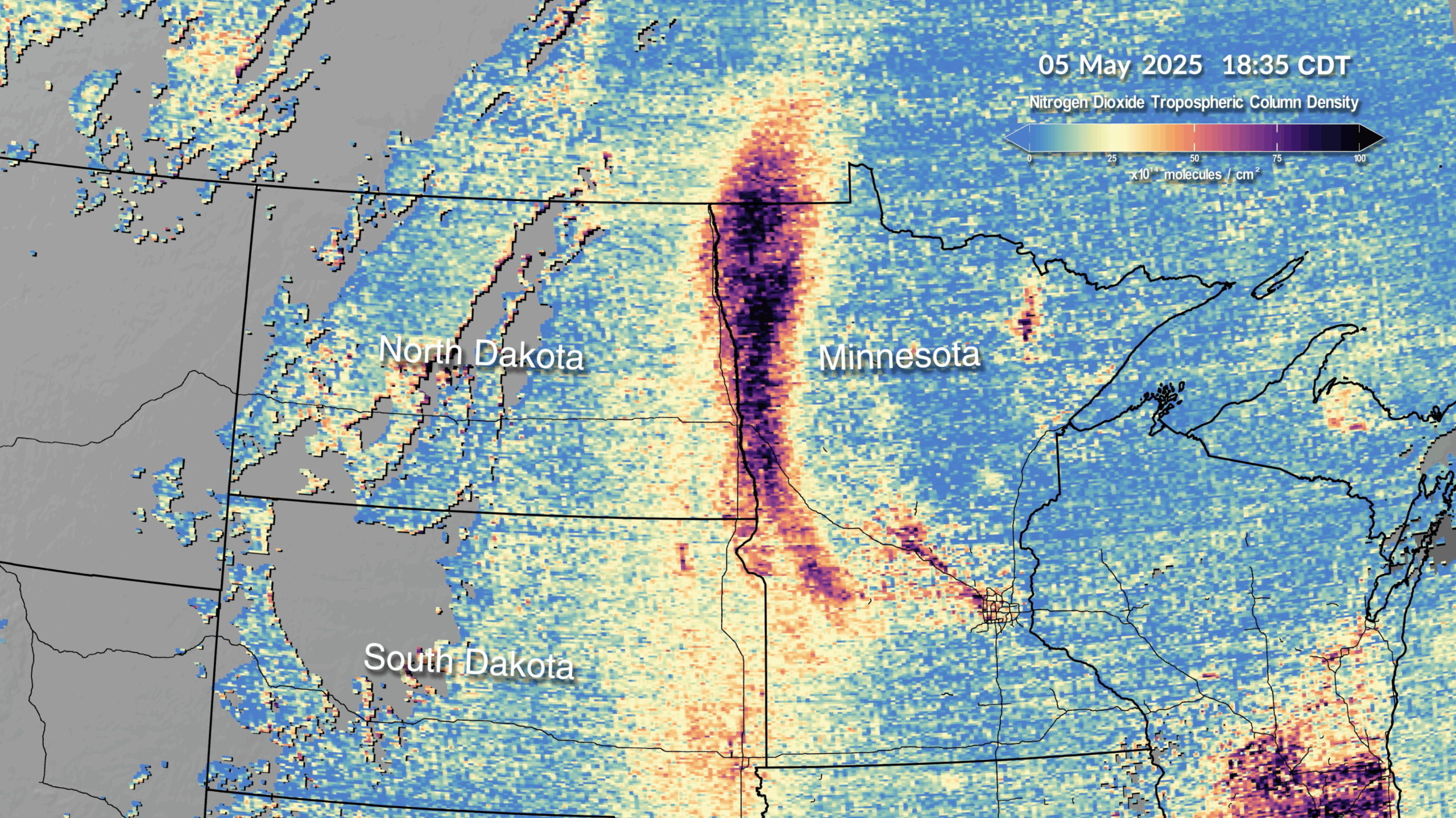Since launching in 2023, NASA’s Tropospheric Emissions: Monitoring of Pollution mission, or TEMPO, has been measuring the quality of the air we breathe from 22,000 miles above the ground. June 19 marked the successful completion of TEMPO’s 20-month-long initial prime mission, and based on the quality of measurements to date, the mission has been extended through at least September 2026. The TEMPO mission is NASA’s first to use a spectrometer to gather hourly air quality data continuously over North America during daytime hours. It can see details down to just a few square miles, a significant advancement over previous satellites.
“NASA satellites have a long history of missions lasting well beyond the primary mission timeline. While TEMPO has completed its primary mission, the life for TEMPO is far from over,” said Laura Judd, research physical scientist and TEMPO science team member at NASA’s Langley Research Center in Hampton, Virginia. “It is a big jump going from once-daily images prior to this mission to hourly data. We are continually learning how to use this data to interpret how emissions change over time and how to track anomalous events, such as smoggy days in cities or the transport of wildfire smoke.”
When air quality is altered by smog, wildfire smoke, dust, or emissions from vehicle traffic and power plants, TEMPO detects the trace gases that come with those effects. These include nitrogen dioxide, ozone, and formaldehyde in the troposphere, the lowest layer of Earth’s atmosphere.
“A major breakthrough during the primary mission has been the successful test of data delivery in under three hours with the help of NASA’s Satellite Needs Working Group. This information empowers decision-makers and first responders to issue timely air quality warnings and help the public reduce outdoor exposure during times of higher pollution,” said Hazem Mahmoud, lead data scientist at NASA’s Atmospheric Science Data Center located at Langley Research Center.
hazem mahmoud
NASA Data Scientist
TEMPO data is archived and distributed freely through the Atmospheric Science Data Center. “The TEMPO mission has set a groundbreaking record as the first mission to surpass two petabytes, or 2 million gigabytes, of data downloads within a single year,” said Mahmoud. “With over 800 unique users, the substantial demand for TEMPO’s data underscores its critical role and the immense value it provides to the scientific community and beyond.” Air quality forecasters, atmospheric scientists, and health researchers make up the bulk of the data users so far.
The TEMPO mission is a collaboration between NASA and the Smithsonian Astrophysical Observatory, whose Center for Astrophysics Harvard & Smithsonian oversees daily operations of the TEMPO instrument and produces data products through its Instrument Operations Center.
Datasets from TEMPO will be expanded through collaborations with partner agencies like the National Oceanic and Atmospheric Administration (NOAA), which is deriving aerosol products that can distinguish between smoke and dust particles and offer insights into their altitude and concentration.
“These datasets are being used to inform the public of rush-hour pollution, air quality alerts, and the movement of smoke from forest fires,” said Xiong Liu, TEMPO’s principal investigator at the Center for Astrophysics Harvard & Smithsonian. “The library will soon grow with the important addition of aerosol products. Users will be able to use these expanded TEMPO products for air quality monitoring, improving forecast models, deriving pollutant amounts in emissions and many other science applications.”
“The TEMPO data validation has truly been a community effort with over 20 agencies at the federal and international level, as well as a community of over 200 scientists at research and academic institutions,” Judd added. “I look forward to seeing how TEMPO data will help close knowledge gaps about the timing, sources, and evolution of air pollution from this unprecedented space-based view.”
An agency review will take place in the fall to assess TEMPO’s achievements and extended mission goals and identify lessons learned that can be applied to future missions.
The TEMPO mission is part of NASA’s Earth Venture Instrument program, which includes small, targeted science investigations designed to complement NASA’s larger research missions. The instrument also forms part of a virtual constellation of air quality monitors for the Northern Hemisphere which includes South Korea’s Geostationary Environment Monitoring Spectrometer and ESA’s (European Space Agency) Sentinel-4 satellite. TEMPO was built by BAE Systems Inc., Space & Mission Systems (formerly Ball Aerospace). It flies onboard the Intelsat 40e satellite built by Maxar Technologies. The TEMPO Instrument Operations Center and the Science Data Processing Center are operated by the Smithsonian Astrophysical Observatory, part of the Center for Astrophysics | Harvard & Smithsonian in Cambridge.
For more information about the TEMPO instrument and mission, visit:
